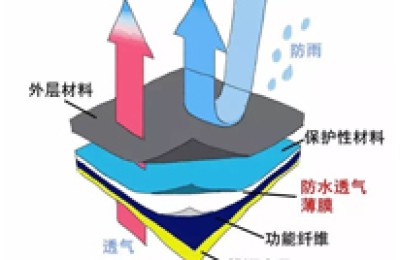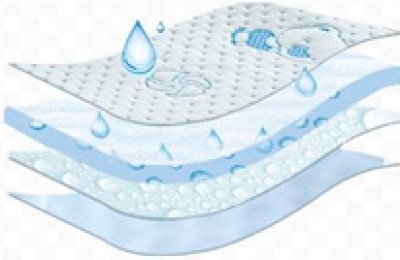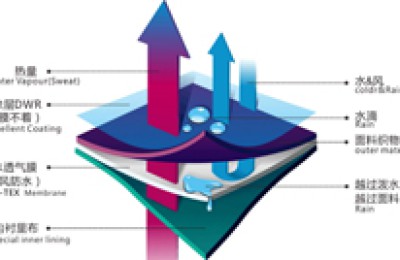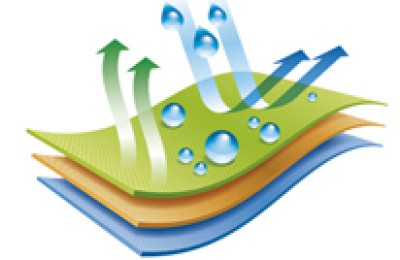The 2020 China Textile and Apparel Trade Show (New York) Spring Exhibition will be held at the Javits Exhibition Center in New York from January 19th to 21st. There are quite a few companies present this year that have obtained environmental protection certification and have functional and environmentally friendly innovative products, which deserves everyone’s attention.
The increase in the proportion of exhibitors with environmental certification and functional products shows that overseas buyers have improved their implementation of the concept of industrial environmental protection and sustainability in recent years. In fact, at the exhibition last July, many overseas buyers had significantly improved their standards for environmentally friendly production. Some buyers had formulated very strict environmental protection plans and expressed their willingness to spend money on using environmentally friendly materials and strictly controlling the production process. More fees. Buyers have strict requirements for raw materials such as recycled polyester and rayon products, as well as for the development of new products in the printing and dyeing process, such as water-saving dyeing and water-free dyeing.
“Not only raw materials, we have now begun to use environmentally friendly packaging in the sample delivery process. Product packaging, hang tags, washing labels, etc. all have new standards to varying degrees.” said the person in charge of Zhejiang Jiaxin Silk said.
Trace supply chain changes, look to the direction On the consumer side
It can be seen that in recent years, the industry’s pursuit of sustainability and its sense of mission have become more and more prominent. This trend will inevitably have an impact on brands, retailers, and suppliers in the clothing industry supply chain. business has had a huge impact. Tracing these changes, we see that starting from the consumer side, consumers’ pursuit of product sustainability is also growing rapidly.
The 2019 Fashion Report released by Lyst, a world-renowned fashion search platform, shows that by tracking the searches of 104 million users in 2019, combined with the sales data of 6 million products in 12,000 online stores, as well as global media and social media According to reports, Lyst found that consumer searches related to sustainable fashion increased by 75% year-on-year, and more and more consumers are specifically searching for sustainable materials, such as regenerated nylon yarn, organic cotton, and recycled materials. Polyester and Tencel fibers, etc.
The “2020 Retail Forecast” recently released by the National Retail Federation pointed out that analysis of online mall ThredUp and retail analysis company global data shows that U.S. second-hand clothing The market reached US$24 billion in 2018 and is expected to reach US$41 billion by 2022. About 74% of Millennials and Generation Z consumers like to buy sustainability-conscious brands, and buying a second-hand product can reduce the carbon footprint by 82%. Francois Souchet, head of the Ellen MacArthur Foundation’s “Building Fashion Sustainability”, said: By increasing the use of clothing, the resale model plays a key role in creating a sustainable fashion industry. Increasing the average number of wears is the most direct way to reduce waste, pollution and capture value. The report predicts that by the end of 2028, the U.S. fashion sustainability market will rise to $64 billion.
Consumer concepts have gradually changed, and the sustainability of fashion brands is becoming an important selection criterion for consumers. For this reason, for the textile and apparel industry, practicing sustainable development is not only a public welfare move to protect the environment and reduce resource waste, but also an important measure to promote industry innovation, value creation and impress consumers. It is also an important step to adapt to the sustainability of the industry. The inevitable choice for sustainable development trend. From raw material innovation, production process control, packaging appearance to retail and consumer ends, all links in the textile and apparel industry chain are seeking to optimize energy consumption and reduce losses to the environment and resources by modifying processes, machines and working methods. and hazards.
As a part of the industry, exhibitions also play an active guiding role in this. China Textile and Apparel Trade Exhibition (New York) has adopted “sustainable development” as the exhibition theme in recent years, integrating the new industry positioning of “technology, green, and fashion” into the development process of the exhibition, using the platform as the starting point, and advocating The “green and environmentally friendly” exhibition model promotes exchanges between relevant parties in the textile industry chain from around the world and practices the concept of sustainable development.
“The sustainable development of the exhibition comes from the exhibition itself on the one hand, and on the other hand it comes from what we The person in charge of the exhibition said that as an international exhibition platform, the exhibition benchmarks international exhibition standards in terms of platform positioning, cooperation environment, site planning, construction material application, conference services, etc., and strives to create a “green and environmentally friendly” exhibition model; on the other hand, as the vane of industry development, the exhibition has also been proposing and guiding in terms of technology, trends, applications, concepts, and corporate social responsibility.��Actively pool all resources and forces to further promote the transformation and upgrading of industry enterprises.
Fast response to demand
Jiangsu Cathay Huasheng Industrial Co., Ltd., an exhibitor at this exhibition, is working with overseas customers Through close cooperation, we learned earlier about the growing demand for sustainable products from New York exhibition buyers, and made a series of adjustments and upgrades. In recent years, Cathay Taisheng’s customers have increased their demand for renewable fabric products. At the same time, they have put forward control requirements on the procurement of raw material cotton, and generally require corresponding certification of organic cotton/better cotton.
“In response to these changes, we passed the OCS organic content standard certification and the GRS textile and clothing global recycling standard certification in 2019. At the same time, the company also requires its raw material and clothing processing suppliers to undergo relevant certifications. And provide help in the process.” said the person in charge of Cathay Pacific.
Fujian Honggang Textile Technology Co., Ltd., which has always attached great importance to environmental protection, will also participate in this session in order to meet the needs of overseas customers for environmental sustainability. The New York exhibition will bring 100% nylon products using blue label dyes that meet OEKO-100 certification standards and more diversified recycled yarn fabric products.
As early as 2015, Honggang won the “Best Water Saving Award for Sustainable Water Use Projects in the Textile Industry” issued by the International Water Balance Organization in Stockholm, Sweden. The large-scale sewage treatment system that it invested heavily in established uses advanced RO Reverse osmosis ultrafiltration membrane can achieve 60% recycling of sewage after treatment.
“In 2019, we increased the number of O-type dye vats to further achieve energy conservation and environmental protection. The blue label or dyes that comply with environmental emissions have passed the OEKO-100 certification not only ensures product safety, but also reduces the emission of harmful objects during the production process, truly practicing clean production and becoming an important part of the promotion of the “zero emission of hazardous chemical substances project”. In addition, in 2019 In 2017, we also increased the use of recycled yarn and actively developed new degradable materials, which have now passed GRS certification. The exhibition is a weathervane that allows us to quickly adjust our product structure and accurately grasp customer needs. What we are now facing When entering the market, both the company itself and its products will become more competitive.” said the person in charge of Honggang.
Jiangsu Lomain Rolland Group Outdoor New Materials Co., Ltd. is an old friend of the New York exhibition. In recent years, overseas buyers have put forward new requirements and standards for environmental protection. From the initial polyester semi-environmental protection to the current fully environmentally friendly nylon, the finishing also needs to use recyclable and biodegradable materials. Produced with the aim of non-polluting and recyclable.
“We advocate “green textiles”, with the theme of protecting the earth shared by mankind, requiring textiles from design, selection of raw materials, production process, packaging, use, service to scrapping, The whole recycling process has no adverse impact on the environment. The company’s use of environmentally friendly yarn has increased from 15% to 40% before, and this year it has been able to achieve a 100% fully recycled environmental protection concept.” said the person in charge of Romain Rolland.
It can be seen that whether it is consumers’ pursuit of environmentally friendly and sustainable products or brand owners’ commitment to social responsibilities, the current supply chain of the textile and apparel industry has shifted towards consumer With the enterprise-driven transformation, green and environmental protection elements are fully integrated into all links of the textile chain.
Promote the positive interaction between sustainable consumption and sustainable production, and promote the sustainable development system of textile recycling from raw materials, production, marketing, consumption to recycling and reuse… The exhibition and the industry have a lot of work to do To do. </p







